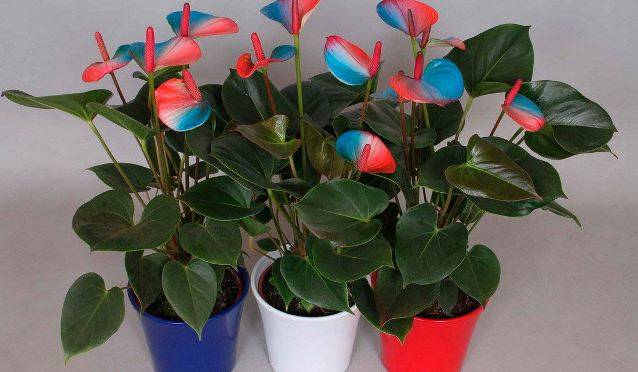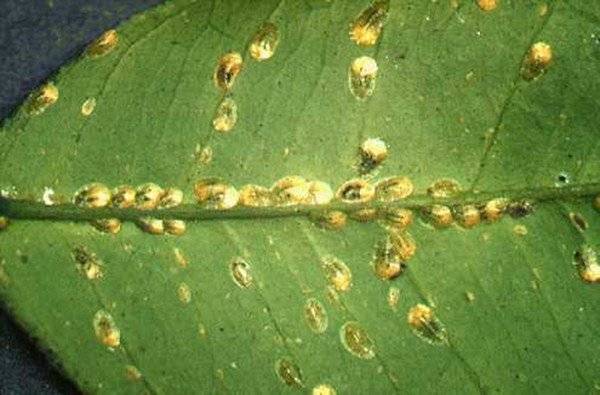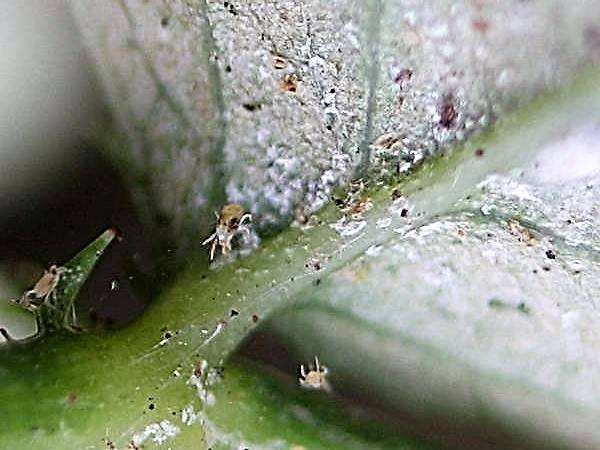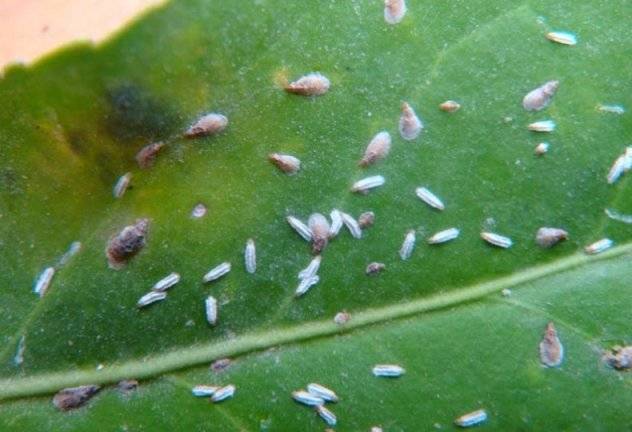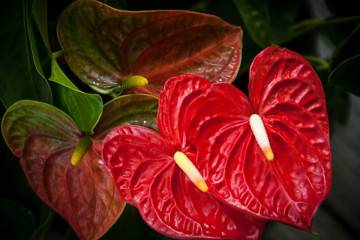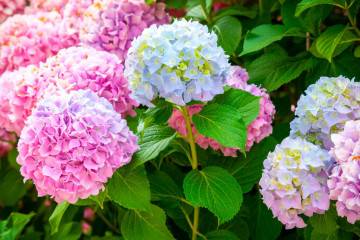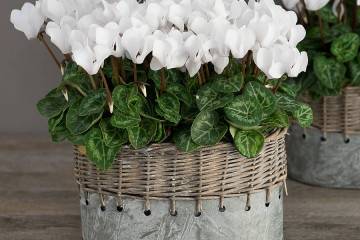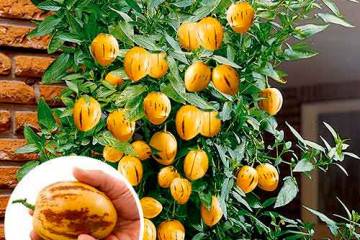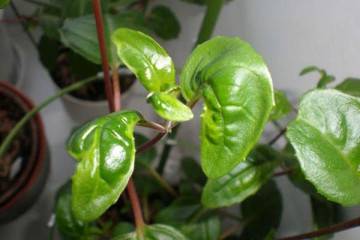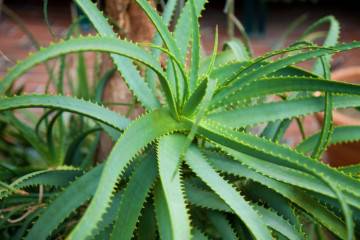Diseases of anthurium, anthurium does not grow - what to do?
Content:
The beautiful exotic anthurium flower pleases with long flowering. Pink, red, white flowers appear at any time of the year and persist for a long time. Only one problem worries too often - the flower is sick, suffers from fungal diseases, pest attacks. What is the reason, if the anthurium does not grow, what to do with it is described below.
Anthurium diseases and their treatment
The origin of anthurium leaf diseases is different. This happens from the wrong content of the flower or other external reasons.
Anthurium leaves turn yellow: what to do
The reasons for the yellowing of the leaves are mistakes when planting and caring for the plant.
The most common ones are:
- violation of watering conditions. Non-adherence to schedule, hard or cold water;
- incorrectly selected content. Lack or excess of sunlight. Sunburn;
- drafts, temperature drops;
- dry indoor air, especially when operating batteries or electric heaters;
- non-compliance with the feeding schedule. Lack of nutrients, in particular nitrogen;
- hypothermia of the plant as a whole or of the root system;
- fungal diseases, pests;
- natural aging of the bush.
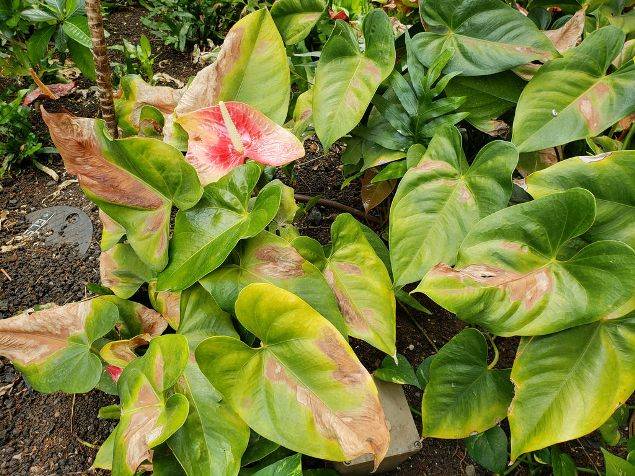
The reasons why the leaves of anthurium turn yellow and the options for what to do in this case are many
First of all, you need to take a closer look at the plant. If it is a matter of fungal diseases, they turn to chemicals. The situation in other cases can be corrected by returning to the correct conditions of detention. The aging process cannot be stopped.
The emerging yellow leaves are removed, as they continue to feed and deplete the soil. Hemp is powdered with crushed charcoal.
Anthurium: why leaves and flowers turn black and dry
If not properly cared for, the leaf plate and flowers can turn black and dry.
Why do the leaves of anthurium turn black:
- when irrigating, hard water is used, leading to an increase in calcium content, but a decrease in magnesium and potassium in the soil. In this case, the plant poorly absorbs nutrients, so the leaves and flowers dry out;
- cold water with excess lime. The culture decreases immunity, the flower dries up;
- frequent watering with cold water leads to decay of the root system, which leads to blackening of foliage and flowers, their fall;
- the appearance of black plaque on the leaf plate indicates the presence of a black fungus, from which the culture dies with lightning speed.
To cure anthurium, agrotechnical measures should be carried out correctly. If the presence of insects is noted, the greens are treated with a 0.3% solution of karbofos. During the procedure, the ground is closed. Repeat the treatment after 2 weeks.
Rust on anthurium
The disease is recognized by brown-rusty spots on the plate. The patterns gradually grow from the edges to the center, occupy the entire area of the leaf, which later dries and falls off.
What to do to get rid of brown spots on anthurium leaves:
- rust is treated with chemical or alcoholic fungicides. Processing is carried out every 3-4 days, which lasts for two weeks. Topaz and Ordan preparations are suitable;
- for prophylaxis use phytosporin-M;
- during treatment, the spraying method is excluded, otherwise the spores of the disease will fall on healthy areas. The leaves are wiped with the necessary fungicide.
Sticky leaves
Home culture leaves turn yellow, curl and become sticky. Rather, the entire plant was visited by aphids. This is a harmful insect that sucks out the juice and leads to the death of the flower. If the infection is early, the plant is washed with laundry soap under the shower.
In addition, spraying the plant with a soap solution at the rate of 20 g of soap shavings per 5 liters of water helps from aphids. In case of severe infection, insecticidal preparations are used for spraying: actellic, antitlin, aktara.
Anthurium fungal diseases and their treatment
With a decrease in immunity, the fungus often infects anthurium. Several types are distinguished among the main infectious diseases.
Septoria
The infection spreads quickly in warm, moist soil. The disease is determined by the leaf plate, on which brown stains with a yellow border are visible. In the absence of treatment, the leaves wither and dry up, the spores of the disease pass to healthy foliage.
To get rid of septoria, treatment is carried out with preparations containing a large amount of copper.
Anthracnose
Another name for the disease is powdery mildew. At the initial stage, brown spots, colored with black dots, appear on the plates. The disease develops rapidly from the drying of the leaves to the death of the plant.
You can save the bushes by acting according to the following plan:
- Remove and burn damaged leaves.
- Treat bushes with chemicals with a high copper content (abiga-peak).
- Isolate the plant from the rest of the home flora.
- Water and spray at a minimum.
Fusarium wilting
This is a serious disease affecting all parts of the plant. A clear sign is the sudden wilting of the bush. However, attentive growers, constantly observing the plant, notice the preceding signs of the onset of the disease: the leaf plates begin to turn yellow, then darken, and the peduncle bend and brown.
You can revive the bush at the beginning of the disease. Preparations with copper content and glyocladin help help.
Experienced growers are advised to do the following:
- Get the bush out of the container.
- Remove the soil from the roots, wash them.
- Dip the roots for a while in a weak foundationol solution.
- Remove damaged parts.
- Transplant into new soil.
Gray rot
Why doesn't anthurium grow? Gray mold may be the cause. The infection spreads quickly. The defeat starts from the trunk, then goes to the shoots, then to the leaves. The infected areas die off. You should get rid of rot when the first signs appear.
The plant will be helped only by high-performance chemicals. Moreover, three-time processing is carried out with short interruptions. If the rot continues to spread, the flower is disposed of.
Yellow leaves
If all the leaves of the flower have turned yellow, and the plant is at the drying stage, flower growers know how to save the anthurium.
For this, the following activities are carried out:
- Affected leaves are removed.
- The rest are processed by the growth stimulant epin.
- The roots are cut to healthy tissue and treated with fungicides.
- Then they are wrapped with moistened sphagnum moss.
- Placed in a transparent cup with drainage holes.
- The glass is placed under the phytolamp until new roots grow.
- During this period, the flower is not watered, but the roots are unfurled and ventilated for 15-20 minutes. daily.
- After the emergence of new roots, the sprouts are planted in the soil for orchids.
- Fortified anthurium is transferred to a permanent pot.
Why do the tips of the leaves of anthurium dry? A cramped pot may be the reason. Due to the lack of free space, the plant lacks oxygen, which means that an urgent flower transplant is required.
Blackening of foliage
What are the causes of blackening foliage:
- non-observance of the conditions of agricultural technology: planting, watering, spraying, fertilizing, pruning, loosening the soil;
- errors in the care of anthurium: the temperature regime, illumination, room humidity, the wrong choice of planting capacity are violated;
- infectious diseases;
- damage to flower bushes by pests.
Pests
Anthurium is resistant to harmful insects, but sometimes it is overcome by pests. In addition to the aphids discussed above, there are other dangerous insects.
Thrips
Their presence is indicated by yellow spots of various sizes and shapes. Brown pests can be seen during daylight hours on the underside of the leaf, where there are also many black dots and their secretions. Thrips insects are dangerous, as they carry the bronzing virus.
If the plant is infected with this virus, it is impossible to save the bush. To prevent infection, spraying with phosphorus-containing insecticides helps: bi-58, ditox, kemifos, fufan, karbofos-500. 3 treatments are carried out in 5-10 days.
Spider mite
The existence of a tick is indicated by the presence of small yellow dots. They spread rapidly and grow in size. As a result, the leaf plate may dry out.
Treat the culture with soapy water. In case of large lesions, insecticides are used.
Shield
Insects adhere firmly to the outside of the leaf. Most often, scabbards are disposed of by mechanical means, using a needle or cotton swab. Chemistry does not penetrate through the dense casing of the shield. The only effective means are oil formulations, in particular, kerosene. After it, the foliage is washed with soapy water.
This flower is very painful and reacts too harshly to improper care. Before buying it, you should evaluate your strengths as a grower, since you will have to tinker with him pretty much. For this, he will thank him with his long flowering.
